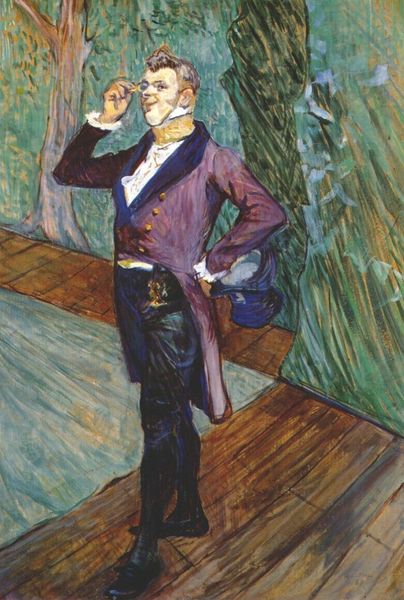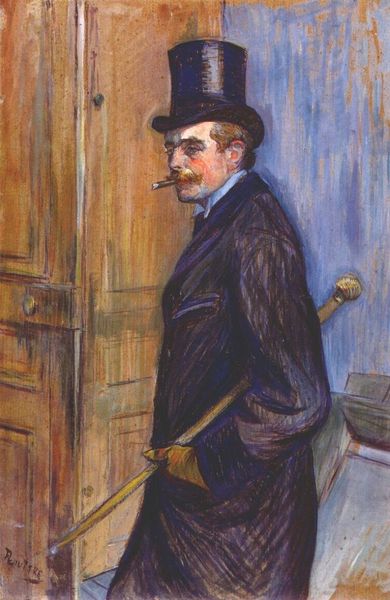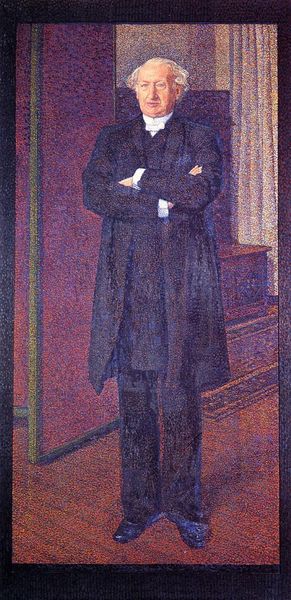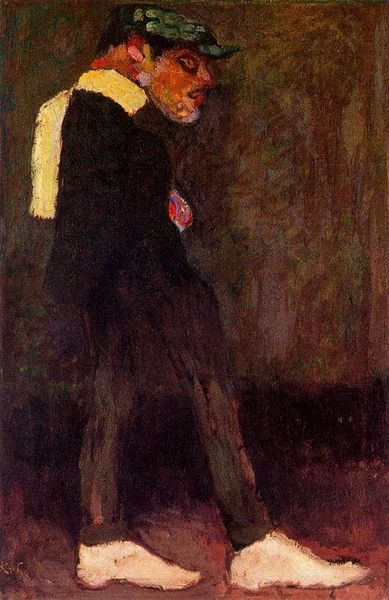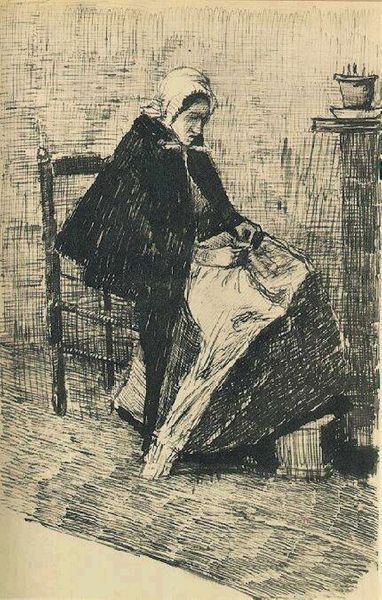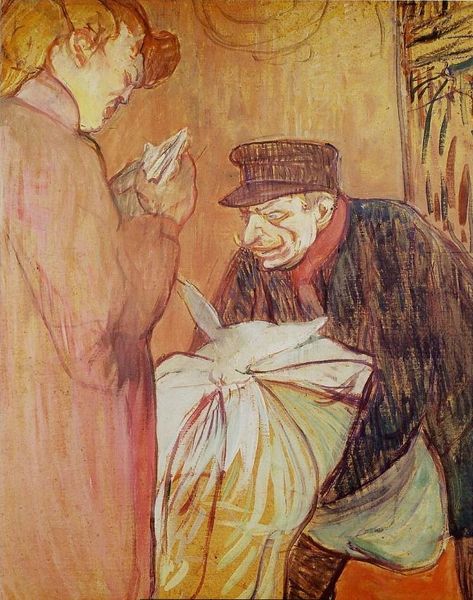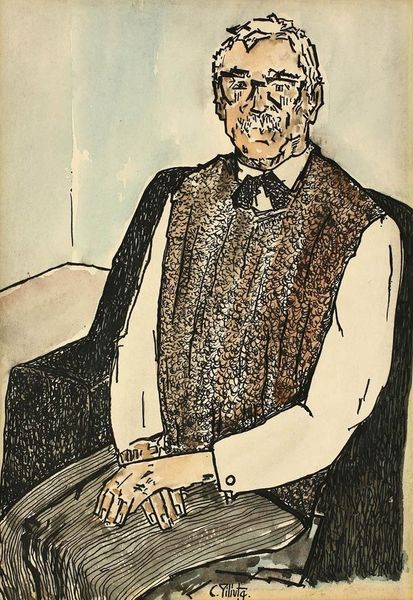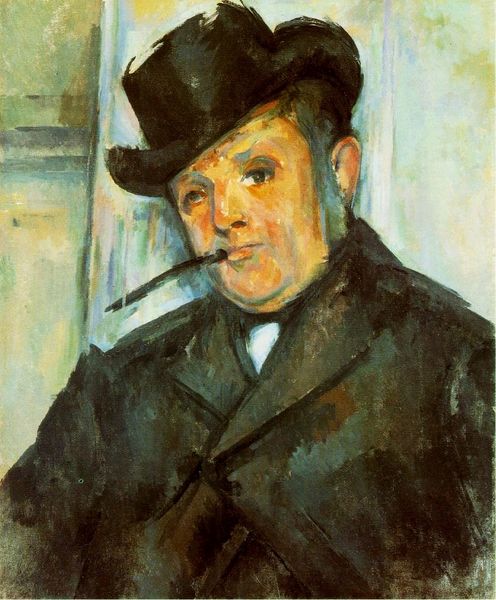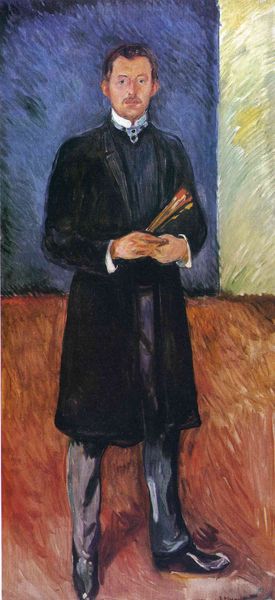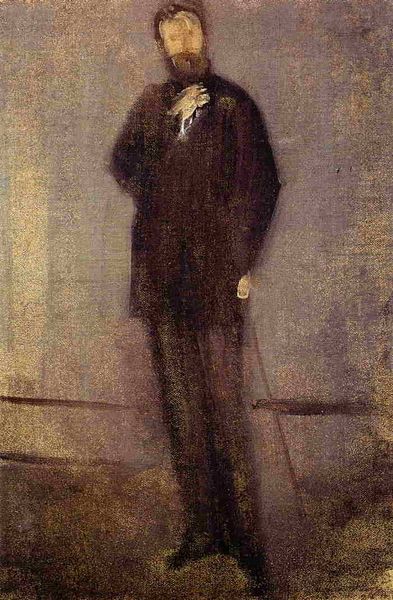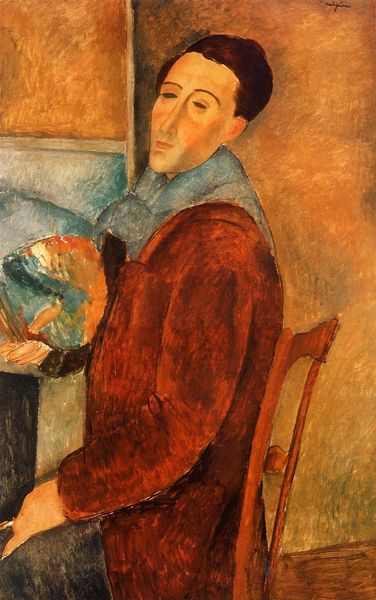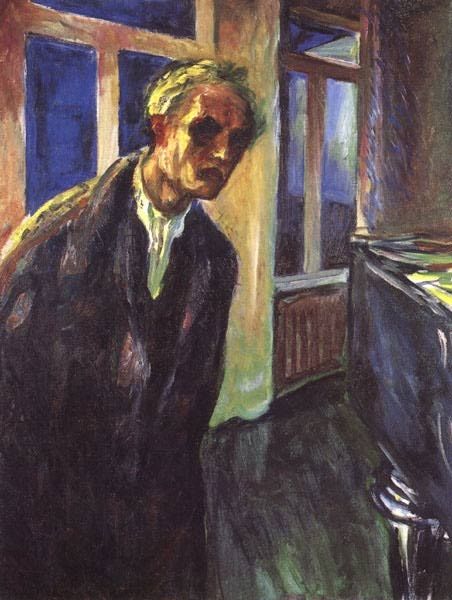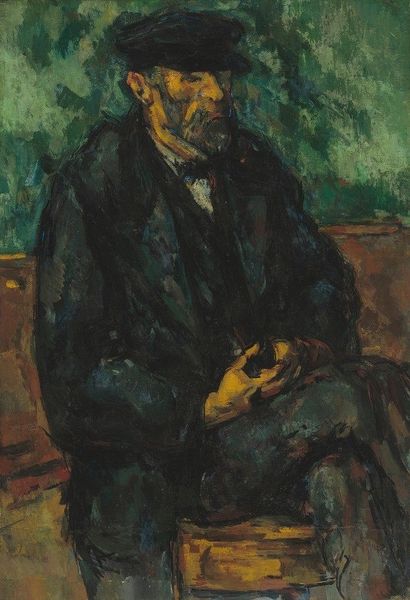
Copyright: Public domain
Curator: It feels a little somber, doesn't it? The colours are muted, almost monochrome, despite the suggestion of foliage. Editor: Indeed. What we're looking at is Toulouse-Lautrec's 1891 oil painting, "Henri Dihau," currently housed in the Musée Toulouse-Lautrec. Dihau was a fellow artist and performer at the Moulin Rouge, a frequent subject for Lautrec. Curator: The walking stick and bowler hat strike me as status symbols, although, counterintuitively, Dihau's face is turned away from any direct contact, creating a sense of emotional remove. It’s as if his internal world doesn't quite align with his external presentation. Editor: Lautrec consistently portrays figures from Montmartre's demimonde, yet in this particular painting, the public persona of the flâneur is more evident. Consider that during this era, Paris had undergone profound transformations—think of Haussmann's renovations and the growing importance of public spaces like cafes and theaters. This portrait encapsulates those social dynamics. Curator: I find myself focusing on the ambiguity in the setting itself. Is he backstage? Outside, but hemmed in by decaying foliage? The locale feels as indeterminate as the figure's state of mind. This might reveal not only the artist's individual choices but cultural perceptions. Editor: The brushstrokes themselves add to the dynamism. Look at how he uses quick, broken strokes to capture movement and light. The historical implications are clear. Lautrec aimed to depict modernity not just through subject matter but in its rapid pace and changing values. The work reminds us that beyond individual psychology, there were widespread shifts in how people engaged with their environments. Curator: Ultimately, despite the contextual depth, the painting lingers in a space of melancholy contemplation. Its power rests in that balance of social documentation and a rather sad individual narrative. Editor: Agreed. It highlights the fascinating intersection between artistic creation, cultural memory, and individual psychology, encouraging deeper examination into how societal changes reflect on us.
Comments
No comments
Be the first to comment and join the conversation on the ultimate creative platform.
